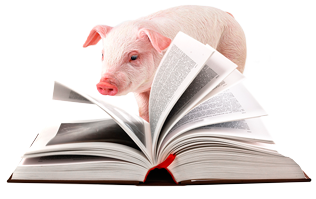 Pig glossary
Pig glossaryIntestine
The intestine is a long tube (in the case of the pig it is 23 m long), so it must coil up in order to fit in the limited space at its disposal in the abdominal cavity. It is divided in 2 parts: the small intestine and the large intestine.
Small intestine
It is the longest part (with an approximate length of 18 m) of the intestine, and it is divided in 3 parts (duodenum, jejunum and ileum). In its internal surface it has a series of microscopic projections (villi) that allow it to absorb the nutrients in the foods that have been digested in the stomach. If we looked at its inner surface with the help of a microscope, it would have an appearance similar to that of a towel. These extensions provide an increase of the surface in contact with the nutrients that are passing by, so the absorption rate improves.
Large intestine
The large intestine is the last part of the digestive system. It is shorter than the small intestine (it is some 5 m long) and it starts at the caecum, which is like a sack where the fibrous part of the pig's ration is digested. After the caecum comes the colon that, in the case of the pig is very long and is coiled around itself. The large intestine ends in the rectum, that is the area where the faeces accumulate.
